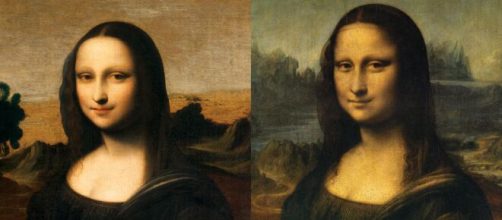Sorry, the news that Leonardo Da Vinci’s “Mona Lisa” held at the Louvre may not be the original, and that the real deal is held by an anonymous collector in Zurich, is not worthy of discussion.
The Zurich Mona is said to be painted in the early 15th century, showing a younger woman. Younger? The Louvre Mona is dated 1503.
A better question
If questions are going to be raised about the Louvre Mona, how about asking why the portrait, commissioned by her husband, Francesco del Giocondo, didn’t end up in his hands?
Or to put it another way, why did Da Vinci have Giocondo’s wife’s portrait in his possession when he died in 1519, fully 16 years after the fact?
My guess? Giocondo hated the portrait and rejected it. I think that because I hate it. That goes for both versions. Mona, wearing dreary, drab brown matching her lifeless hair, comes off as leaden.
So, it’s hard to understand why such a dull image attracts millions a year pushing and shoving to get a closer look. Of course, if you go by art historian Giorgio Vasari’s view in his 1530 book “Lives of the Artists, Vol. 1,” my disdain is wrongheaded.
Vasari said this about the portrait: “If one wanted to see how faithfully art can imitate nature, one can readily perceive it from this head.”
And when he gets to Mona’s mouth, I have to wonder if we’re talking about the same painting.
“The mouth appears to be living flesh rather than paint.”
Wait, there’s one more convulsive catching of breath: “On looking closely at the pit of her throat, one could swear that the pulses were beating.”
You’ve got to be kidding!
Then there’s Vasari’s description of the mood that Da Vinci set for Mona in his studio that reflects so poorly on the portrait: “He employed singers and musicians or jesters to keep her full merriment.”
Do you see merriment anywhere in this portrait? Vasari goes on to say: “As a result, there was a smile so pleasing that it seemed divine rather than human.” Oh, puhleeze!
Does he mean those strand-like lips that, by a very small margin, and not quite yet, edge her mouth into a smile?
That smile?
At least one historian questions this point. Henrik Willem Van Loon noted in his 1939 book “The Arts” that Da Vinci painted Mona’s mouth like a strand merged into shadow because he didn’t know how to paint lips very well.
Van Loon refers to similar mouths of women painted by Da Vinci, such as “Madonna and Child with St. Anne” and “Lady with an Ermine.” He also pointed out Mona’s supposed smile can also be seen in ancient sculptures, and for the same reason – the inability to render mouths properly.
Of course, you may well ask how a super draftsman like Da Vinci could mess up mouths. Van Loon suggested that there's a big difference between drawing and painting. Da Vinci drew all the time, but seldom completed a painting.
Maybe he should have drawn Mona’s portrait.


